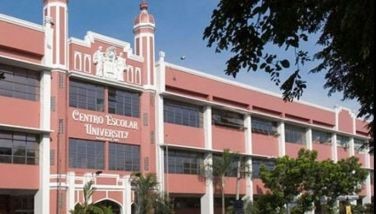DA takes steps to ensure food security

April 16, 2007 | 12:00am
The Department of Agriculture (DA) has undertaken several measures to ensure the country’s food security following some critical observations by the United Nations Food and Agriculture Organization, Agriculture Undersecretary Segfredo Serrano said yesterday.
These measures include more funding for irrigation and post-harvest facilities; expanding production sites, particularly in less disaster-prone areas; pre-positioning basic food supplies to calamity-prone regions, and extending support to farmers and fisherfolk to help widen their access to markets.
Likewise, the DA is setting up a P503-million "food highway" that will link farm production areas to major consumption centers as well as calamity and isolation-prone sites.
The food highway, which will be set up by the National Food Authority (NFA), consists of inter-related post-harvest facilities and marketing support systems to be established in strategic areas across the country with the goal of reducing crop wastage and losses and expanding the access of small farmers and fisherfolk to more markets for their produce, Serrano said.
Serrano said that under the Ginintuang Masaganang Ani (GMA) Rice Program, the DA would undertake additional measures to increase production using certified seeds and bio organic fertilizer support, in some 600,000 hectares of farmlands.
"This is conservatively projected to contribute an incremental output of 300,000 metric tons of palay from the increased productivity from the current 2.8 MT per hectare to 3.5 MT per hectare in these areas normally cropped only during the rainy season," Serrano said.
The GMA rice program is targeting 16.2 million MT of palay in 2007 which would increase the level of sufficiency from 87 percent to 90 percent.
The corn program, on the other hand, would be completely integrated with the livestock commodity programs to enhance the stability of yellow corn supply to these industries.
These initiatives, which would also benefit consumers through cheaper but quality food items, would be further complemented by programs to improve logistics support to agricultural producers such as the establishment of more Bagsakan Centers, Barangay Food Terminals, cooperative meat shops and a national cold chain system, Serrano said.
"While in general, there may still be significant deficits in certain sectors, particularly in rice, this year’s massive public investments in the farm sector are expected to bear fruit as early as next year when the productivity-enhancing domestic support system is nearly in place," Serrano said.
He assured that "any deficit has already been anticipated, inclusive of those which may arise from natural disasters, with programmed inflows from external sources."
These measures include more funding for irrigation and post-harvest facilities; expanding production sites, particularly in less disaster-prone areas; pre-positioning basic food supplies to calamity-prone regions, and extending support to farmers and fisherfolk to help widen their access to markets.
Likewise, the DA is setting up a P503-million "food highway" that will link farm production areas to major consumption centers as well as calamity and isolation-prone sites.
The food highway, which will be set up by the National Food Authority (NFA), consists of inter-related post-harvest facilities and marketing support systems to be established in strategic areas across the country with the goal of reducing crop wastage and losses and expanding the access of small farmers and fisherfolk to more markets for their produce, Serrano said.
Serrano said that under the Ginintuang Masaganang Ani (GMA) Rice Program, the DA would undertake additional measures to increase production using certified seeds and bio organic fertilizer support, in some 600,000 hectares of farmlands.
"This is conservatively projected to contribute an incremental output of 300,000 metric tons of palay from the increased productivity from the current 2.8 MT per hectare to 3.5 MT per hectare in these areas normally cropped only during the rainy season," Serrano said.
The GMA rice program is targeting 16.2 million MT of palay in 2007 which would increase the level of sufficiency from 87 percent to 90 percent.
The corn program, on the other hand, would be completely integrated with the livestock commodity programs to enhance the stability of yellow corn supply to these industries.
These initiatives, which would also benefit consumers through cheaper but quality food items, would be further complemented by programs to improve logistics support to agricultural producers such as the establishment of more Bagsakan Centers, Barangay Food Terminals, cooperative meat shops and a national cold chain system, Serrano said.
"While in general, there may still be significant deficits in certain sectors, particularly in rice, this year’s massive public investments in the farm sector are expected to bear fruit as early as next year when the productivity-enhancing domestic support system is nearly in place," Serrano said.
He assured that "any deficit has already been anticipated, inclusive of those which may arise from natural disasters, with programmed inflows from external sources."
BrandSpace Articles
<
>
- Latest
- Trending
Trending
Latest
Trending
Latest
Recommended
































